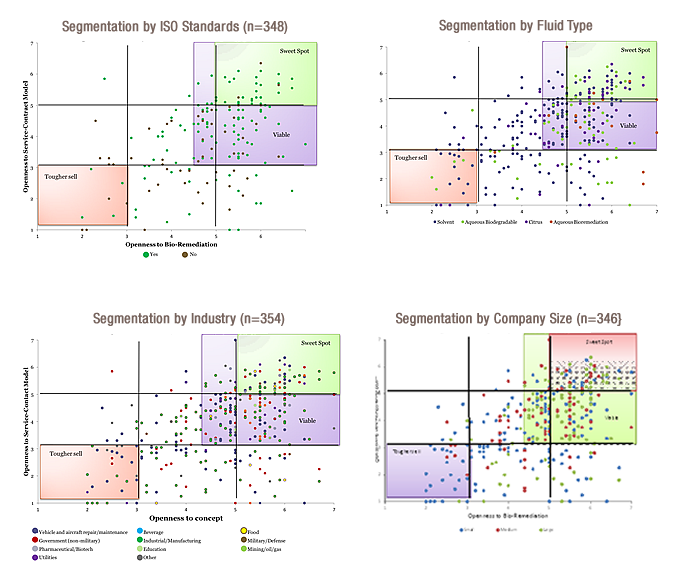Market segmentation comes in many forms, from simple cross-tabs of respondents to sophisticated methods designed to isolate clusters of customers by:
- attitudes
- buying behavior
- demographics
- firmographics
- geography
- needs
- product/solution preferences
- psychographics
Geo Strategy Partners employs a variety of segmentation tools to allow our clients to focus sales and marketing campaigns toward clients that are likely to be early adopters of new solutions or in the “sweet spot“ of good fit for a proposed value proposition, or to tailor campaigns to different strata of end users according to buying behavior or profile.
The chosen method of segmentation should be flexible and adapted to the situation based on two key elements: 1) how the customers actually cluster in the market place; and 2) how those clusters can best be categorized and targeted.
Ultimately, the business goal determines the type of data that will be used for segmentation and the variables that will be used to support business decisions.
- Dependant variables
- Based on the business goal, we need to determine what we are trying to predict
- Segmentation variables
- Based on what we are trying to predict, we determine what type of segmentation is most appropriate and then determine the predictive variables
- Profiling variables
- The predictive variables must relate to an easily identifiable profiling variable, For example, a certain attitude or the way people like to learn may predict the desired behavior but be difficult to identify; correlations with profiling variables must be established to support targeting.



